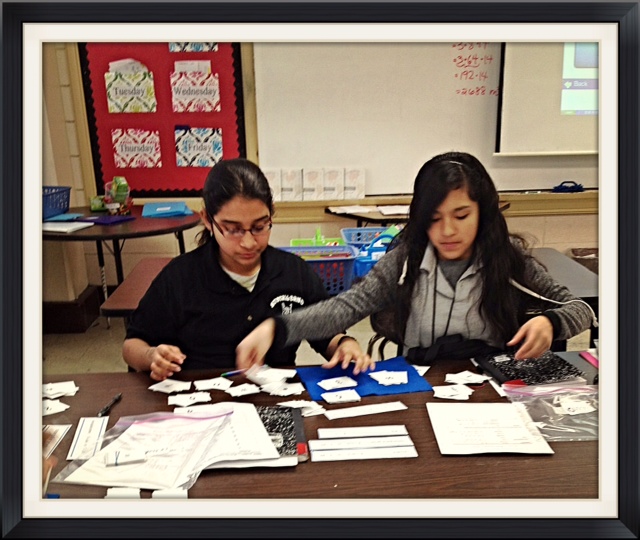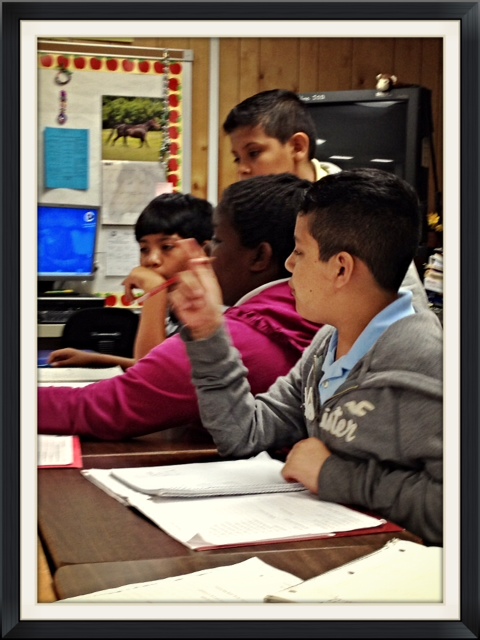Does Tabor Rotation work with…
…CCSS-Common Core State Standards?
…TEKS-Texas Essential Knowledge & Skills?
…CCGPS-Common Core Georgia Performance Standards?
…my district’s mandated curriculum?
…the new program my district just adopted?
The list could go on and on, but the answer to every one of the questions above is YES!
Why is the answer yes? It’s simple. Tabor Rotation works with all of the above because it is an instructional framework that effectively differentiates instruction in mathematics. It’s not program–that’s the beauty of it! It’s a plan that gives teachers a way to help every student explore concepts in varied modalities and in varied groupings. The 14 Essential Elements of Tabor Rotation are good teaching practices that provide teachers and schools with a structure for best meeting the needs of every student.
Because Tabor Rotation is a framework for instruction that highlights 14 Essential Elements of effective instruction, it works at any level, with any resources, any curriculum, and any time frame!
The Tabor Rotation Framework helps teachers provide their students with many opportunities to explore, experience, practice, apply, and deeply understand math concepts.
Leslie Skinner, a 3rd grade teacher who began implementing Tabor Rotation in her classroom after a Tabor Rotation Institute in January, 2013, explains it well,
“[Tabor Rotation] is not a program, but a framework that helps teachers like me, do what I should already be doing. …All the needs of my students are met with Tabor due to the focus it places on one skill in heterogeneous and homogeneous groupings. The stations have real-world connections with lots of hands-on manipulatives and games, which helps reinforce the skill for better long-term retention. The students work in mixed ability groups to generate a more student-centered classroom by giving them the opportunity to learn from each other. The ability groups [Readiness Groups on Days 4 & 5 of the Tabor Rotation Framework] afford the students more specific instruction to help them reach their highest potential.
I strongly believe all my students passed the STAAR [State of Texas Assessment of Academic Readiness] test because of the implementation of Tabor Rotation in my classroom.”
Now for the next big question…
How can I cover all the standards, teach everything I need to teach, and use Tabor Rotation?
According to the most recent research on the skills needed in the 21st century, teachers can’t afford not to! Michael Brick, in his article, “Three Cheers for School! Building a Better School Day,” for Parade magazine, listed some “inspiring ideas to deepen learning, engage students, close achievement gaps, and better prepare our kids for a 21st-century world.”
Many of these inspiring ideas are easily accomplished if teachers use the Tabor Rotation Framework, because they’re embedded in a week of Tabor Rotation.
- Emphasize Learning, Not Testing- Our country’s emphasis on test-taking has increased pressure on teachers to “teach to the test” when students need to be able to deal well with confrontation and see two different sides to a problem [Working inTeams and completing activities at Tabor Rotation Stations, Challenges and Problem Solving in Readiness Groups and at the Teacher Time Station].
- Teach 21st-Century Skills- Students benefit in the real world when they have encountered projects that are like the real world. Long-Term Projects [Projects in the Technology/Innovation Station] teach them to persevere, revise, reflect, and hone their skills.
- Flip the Class Work- Instead of spending class time listening to the teacher lecture, students should spend class time having the concepts reinforced with interactive labs and discussions. {The entire Tabor Rotation Framework is student-centered and emphasizes students interacting with the concepts to make meaning of them and to apply them in multiple situations.]
The entire article is thought-provoking and well worth your time.
Does Tabor Rotation work?
Do I really have the time to use it?
I’ll let Charles Bucher, a secondary teacher and avid user of Tabor Rotation, answer that,
“With Tabor Rotation, I found a framework through which I was able to teach my district’s required curriculum, yet find new ways to engage and motivate students, and streamline the hurricane of paperwork and accountability required of all teachers.
With Tabor, you focus on what is important: small group and individual time with students to teach, assess, and correct. As a benefit, you get unique ideas and tools for classroom management and organization, with every element carefully tailored to the math classroom, but easily adaptable to any curriculum.
Tabor Rotation has made me the teacher I am today:
A veteran teacher ready to mentor the four new math teachers we will have next fall,
Confidently in control and calm in the classroom,
Prepared to punt in any emergency,
Organized so that data is at my fingertips and informs my teaching strategies for individual students,
Expecting more of myself and the students – we all learn every day.”
“How do we create the conditions at home, in our schools, and in our communities for students to create, learn, produce, and to innovate?” -Tony Wagner



